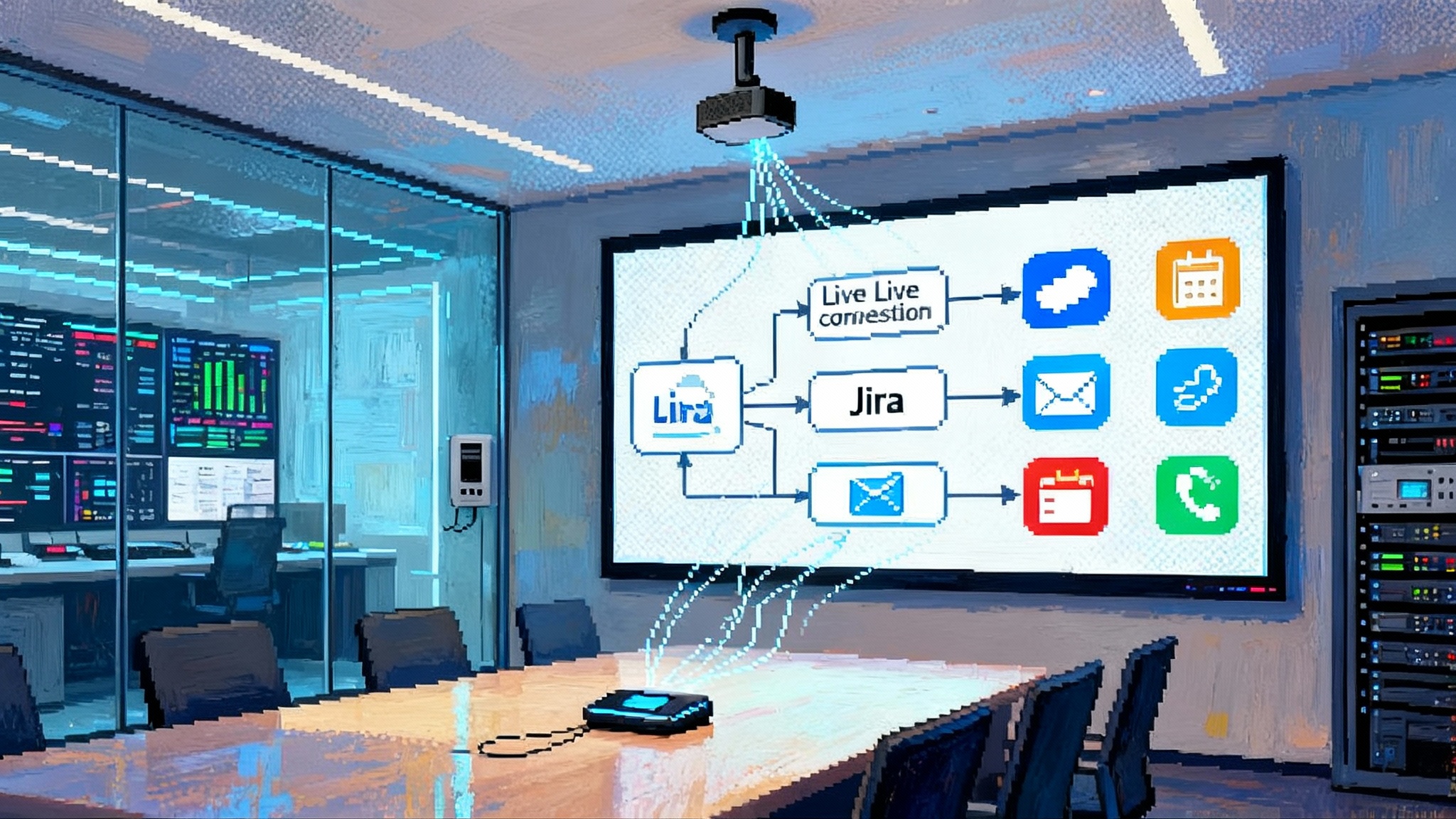Browser-native agents arrive with Gemini 2.5 Computer Use
Google’s Gemini 2.5 Computer Use puts an agent behind the keyboard inside the browser. Here is what shipped, why it matters for automation, and a 30 day plan to pilot it safely.

Breaking: A browser-only agent takes the wheel
Google has previewed a model called Gemini 2.5 Computer Use that controls software through the same pixels and widgets people do. It lives in the browser, not the operating system, and it is available in public preview for developers, as detailed in Google’s Computer Use announcement. The pitch is simple and radical at the same time: instead of waiting for every tool to expose a clean application programming interface, let the agent see a screenshot, reason about it, and act by clicking, typing, scrolling, and dragging. That turns the browser into a universal remote for software.
This matters because real work hides behind logins, paywalls, single sign on portals, and human first flows that were never designed for robots. Early demos show the model completing multi step tasks across different sites and internal apps, with Google positioning it as optimized for browsers first rather than full desktop control. In short, computer use has moved from research to a developer preview you can start building with today.
What actually shipped
Under the hood, Gemini 2.5 Computer Use runs an agent loop. Your code sends the model a goal, a screenshot of the current page, recent action history, and optional constraints. The model responds with a specific user interface action to execute, such as click at coordinates, type text, press key, or drag element. You execute the action, capture a fresh screenshot and the current address, then feed that back. The loop repeats until the task is done or a guardrail triggers a stop. Google exposes this through a dedicated Computer Use tool in the Gemini application programming interface with a preview model identifier and a defined list of allowed actions, documented in the Gemini Computer Use docs.
There are two essential boundaries in this first release. First, it is primarily optimized for web browsers. Second, it is not yet tuned for full operating system control, so do not expect file system access or native application automation. That choice is not a limitation disguised as a feature. It is a bet that browsers already cover most enterprise tasks that matter: forms, dashboards, consoles, checkout flows, internal portals, and web versions of line of business tools.
The browser is becoming the universal API
Think of enterprise software as a city. Application programming interfaces are direct subway lines, fast when they exist, but often they do not go to the neighborhood you need. The browser is the street grid. It reaches everywhere because every service exposes a human interface. A browser native agent converts that grid into a programmable surface. This echoes how chat is the new runtime for many agentic patterns.
Here is what becomes possible right away:
- Work behind logins without vendor integrations. The agent signs in through the same forms your team uses today, including single sign on. That means you can automate a task inside a partner portal or a legacy tool that never shipped an application programming interface.
- Compose flows across vendors. Agents can move from your internal ticketing system to a partner knowledge base to a third party dashboard, carrying context as they go.
- Ship programs where contracts used to be. Instead of waiting months for a new integration statement of work, you deploy an agent that completes the same steps in the user interface and ships in days.
The upshot is not that application programming interfaces go away. It is that they stop being a hard prerequisite for automation. You use an application programming interface when it exists and fall back to the browser when it does not.
A new stack: model plus managed browser infrastructure
Teams that treat computer use like a traditional bot often get stuck on day two. The hard part is not generating a click; it is everything around the click. You need a production grade browser fleet that is fast, isolated, compliant, observable, and disposable on demand. You need a client side action runner that turns the model’s intent into real interactions and sends back screenshots and state without leaking secrets. You need proxy management, device profiles, and a way to survive popups, consent modals, and captchas.
That is why the Computer Use stack looks like this:
- Reasoning model. Gemini 2.5 Computer Use interprets screens and decides the next action.
- Action runner. A lightweight controller, often built on Playwright or a similar framework, that executes model actions, enforces guardrails, and captures fresh context for the next step.
- Managed browser infrastructure. Hosted, sandboxed browsers with session recording, logs, stealth modes, network controls, and strong isolation. Providers in this layer already integrate with Computer Use and emphasize lower cost and faster startup than full virtual machines.
A practical mental model: the model is the pilot, the action runner is the cockpit, and the managed browser is the airplane. You can fly short hops on your laptop, but scheduled service needs a fleet.
Why this undercuts classic robotic process automation and many integrations
Classic robotic process automation tools thrive in structured, repetitive flows inside a single vendor stack. They struggle when the interface changes, when flows cross multiple systems, or when the task needs judgment. Browser native agents flip the economics:
- Coverage: they work wherever a human can work in a modern browser, including inside authentication walls and behind adaptive web interfaces.
- Time to value: you automate in days by scripting outcomes and guardrails rather than negotiating new enterprise integrations.
- Maintenance: the model adapts to small user interface changes using vision and layout reasoning. You still need tests and monitors, but you spend less time chasing brittle selectors.
- Composition: agents can hop across tools, which is where many real processes live. This aligns with how agent control planes go mainstream.
Expect robotic process automation vendors to add similar capabilities and expect integration heavy teams to keep using application programming interfaces where they exist. The shift is not about replacement; it is about moving more automation to the browser layer where coverage and time to value are better.
Early enterprise wins you can ship this quarter
- User interface testing as a service. Internal developer platform teams can hand the model a set of user flows and let it run them across staging and production. Google reports it is using the model in production for user interface testing, which matches what many organizations need to reduce regression risk without brittle test code. Tie this into your continuous integration pipeline and your test suite learns to click what users click.
- Operations playbooks in ops consoles. Provisioning, configuration, and audits across cloud dashboards and vendor portals are heavy on clicks and forms. An agent can execute standard playbooks during business hours and fall back to an on call engineer for anything ambiguous.
- Checkout flows behind logins. Sales operations teams often need to place orders in partner portals or trigger fulfillment in merchant consoles that do not expose application programming interfaces. Agents can sign in, fill forms, attach documents, and collect receipts like a human.
- Support triage across multiple tools. A model can reproduce a customer issue across your web app, a payment gateway dashboard, and a shipping portal, while recording a trace of the steps it took.
The theme is the same: pick processes with clear outcomes, repetitive steps, and high value per run. Start where you have brittle scripts today and where an integration would take too long.
How guardrails and safety will actually work
Security and reliability hinge on the controls around the model. In practice, enterprises will deploy a layered approach:
- Action allowlist and blocklist. Use a defined set of user interface actions. Exclude sensitive actions such as file uploads or clipboard access, and disable any custom actions when the domain is not on an allowlist.
- Human in the loop confirmations. Ask for confirmation before sensitive steps, such as purchases or changes to security settings. Confirmations can flow to a chat client for review or require a signed approval inside your internal portal.
- Domain and path policies. Limit where an agent can act. For example, allow read only browsing on public sites, allow form submissions only on your own domains, and require approvals on partner portals.
- Step and time budgets. Cap the number of actions per task and set a maximum runtime. If the budget is exceeded, the run halts and creates a case for a human to resolve.
- Data loss prevention and masking. Ensure screenshots are processed inside controlled infrastructure. Mask secrets and personal information in both screenshots and logs. Keep audit trails with hashes and signed timestamps. Tie identity controls back to how the moat shifts to identity.
- Prompt injection defenses. Treat the web page as an untrusted source. Sanitize on page instructions and filter cross site navigation attempts that do not match your allowlist. Your runner should enforce policy at the network and action layers.
- Sandboxed browsers with identity controls. Run each agent in an isolated, disposable browser profile, with per run credentials, device profiles, and egress policies.
The goal is to build a system that can prove what it did. Logs should capture every action and screenshot, but they must do so in a compliant way. That audit trail is how you defend uptime, resolve incidents, and pass vendor assessments.
Why browser only can scale faster and cheaper than full operating system control
Running a headless browser is simpler and cheaper than renting a full virtual desktop for every agent. Startup latency is lower, density is higher, and you avoid the overhead of managing a fleet of operating systems, drivers, and windowing quirks. Vendors in this space report that browsers spin up faster and cost significantly less than full virtual machines, which translates to better unit economics at scale. Treat these as directional, since exact numbers vary by workload, but the pattern is clear.
The browser is also a safer control surface. Limiting the agent to one application boundary reduces blast radius and simplifies permissions. You do not need file system access or local process control for most business tasks. If a workflow truly requires native control, keep it as a special case with traditional automation or a separate, heavily locked down agent that can access the operating system.
How this differs from operating system level agent rivals
Some agent approaches control the whole machine. That unlocks scenarios like opening native spreadsheets, moving files, or automating internal desktop apps. It also increases complexity and risk. Google’s current choice is narrower by design. It focuses on the browser and reports strong results on web and mobile control benchmarks, while noting that operating system level control is not yet optimized. For many enterprise tasks, that is exactly where you want the agent to live.
What to build first: a 30 day plan
Week 1: Choose two candidate flows
- Pick one internal flow with a clear outcome and high volume, like submitting a compliance form in a vendor portal.
- Pick one product flow you can measure, like creating a trial account and converting to a paid plan in your own web app.
- Define success criteria. For example, 95 percent success on staging user interface tests and 80 percent on production portal submissions.
Week 2: Stand up the stack
- Provision managed browsers in a segregated environment. Wire logs, session recordings, and access controls to your existing monitoring tools.
- Implement an action runner that enforces domain policies, step budgets, and confirmation prompts.
- Configure the model with excluded actions, add any custom actions you need, and set conservative timeouts.
Week 3: Build guardrails and observability
- Add prompt injection filters and content policies. Mask secrets in screenshots. Build a minimal review interface for confirmations.
- Instrument everything. Emit metrics for success rate, average actions per task, time per step, and abnormal terminations.
Week 4: Pilot and compare
- Run agents on a schedule alongside existing scripts or manual runs.
- Compare unit economics. Track agent minutes, browser minutes, and human minutes saved. A good early target is a 3 to 5 times reduction in per run cost compared to brittle scripts.
- Produce a one page report with pass rates, costs, incidents, and recommendations to expand or pause.
Measurement that matters
Do not celebrate the first successful run. Celebrate the first hundred in a row. Metrics to standardize:
- Task success rate at the flow level, not just action accuracy.
- Actions per successful task and average recovery actions after errors.
- Time to first byte and time between actions, which correlates with perceived speed.
- Cost per completed task, inclusive of model tokens and browser minutes.
- Human interventions per hundred runs and mean time to resolution.
These are the numbers your finance partner and security partner will want to see before expansion.
The next twelve months
Expect three things to evolve quickly:
- Reliability on messy pages. As benchmarks and operator feedback flow back into training, the model should handle more edge cases in real tools, not just clean demos. Early reports suggest a steady path forward.
- Tighter platform integrations. Workspace apps, cloud consoles, and partner portals will expose hints and annotations that make agent control more reliable, without requiring public application programming interfaces.
- Better policy engines. Expect standard libraries for allowlists, approvals, and data loss prevention to make it easier to do the right thing by default.
The bottom line
The browser is turning into the universal application programming interface. Gemini 2.5 Computer Use brings that vision out of the lab and into a developer preview you can ship against. Start with user interface testing and operations routines that cross multiple web apps. Wrap your runs in strict guardrails and measure outcomes like a product. If your teams treat the browser as the new integration layer, you can ship automation faster, with less vendor friction, and with unit economics that get better as you scale.






